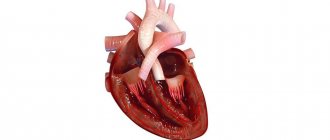Category: Alcohol poisoning
Poisoning with alcohol substitutes is often diagnosed in people who are addicted to alcoholic beverages but have no money. Those who want to save money buy alcohol from illegal outlets at a minimal price.
When consuming such drinks, intoxication often occurs with negative consequences in adults and children.
Poisoning with surrogate alcoholic beverages is included in ICD 10 and is included in the group “toxic effects of alcohol.”
Intoxication with harmful derivatives has a code according to ICD 10 - T51.0 - T51.9. Such overdoses occupy a leading place among all poisonings. More than ninety percent of poisoned people die before first aid and hospitalization.
About ethyl alcohol
Ethyl alcohol has a predominantly negative effect on humans. It is a volatile transparent liquid with a specific odor and pungent taste, highly soluble in water. Alcohol is highly flammable and is often used in medicine for external treatment, as an antiseptic. It is also used as a solvent for technical purposes.
As a result of a series of biochemical reactions, humans produce their own, endogenous ethanol. Its presence is necessary for the synthesis of hormones and improved adaptation to aggressive external factors. Alcohol is a waste product of yeast fungi and can also be synthesized chemically.
Ethanol
Types of alcohol surrogates
There are two types of alcohol surrogates – true and false. The first type includes substances containing ethyl alcohol.
True:
- Butyl alcohol.
- Industrial alcohol.
- Alcohol-based lotions and colognes.
- Stain.
- Varnish.
- Technical compound – denatured alcohol.
False surrogates contain other types of alcohols - ethylene glycol, methanol, isopropanol, dichloroethane. Compounds of this group are considered a serious threat to human health and life. In case of poisoning with such a drink, immediate first aid and a visit to a doctor are required.
Alcohol metabolism process
Once inside, alcohol is quickly absorbed from the mouth, through the mucous membrane of the esophagus and stomach, the largest part of alcohol enters the blood through the walls of the duodenum. The rate of absorption decreases if consumption is not on an empty stomach. Therefore, the common advice that when drinking, you need to have a snack has some basis. But the presence of carbon dioxide, on the contrary, accelerates this absorption process.
The metabolism of ethanol after entering the blood consists of its subsequent accumulation in tissues. The largest amount accumulates in the brain and gonads. In the central nervous system, alcohol begins to affect the activity of neurotransmitters:
- the level of catecholamines increases;
- the amount of dopamine increases;
- the production of norepinephrine increases;
- inhibition of the GABA system occurs;
- glutamate receptors are inhibited.
This is the chemistry of the intoxicating effect of alcohol, and as a result of the formation of these bioactive substances, a person experiences a state called intoxication:
- emotional tension disappears;
- relaxation and calm comes;
- bad memories disappear;
- the pain threshold increases.
Alcohol is excreted through the lungs (about 10%), kidneys and sweat glands. But most of it undergoes biotransformation in the liver with conversion into acetaldehyde under the action of alcohol dehydrogenase. It is a source of other metabolites that are structurally similar to morphine and act in much the same way. It is this mechanism that underlies the development of addiction to alcohol. A large amount of ethyl alcohol taken leads to the destruction of hepatocytes.
Reasons for the development of alcoholism
It is alcohol withdrawal syndrome that causes the development of binge drinking. If the patient’s condition is not aggravated by exacerbation of chronic diseases, convulsions, or mental disorders, then alcohol syndrome gradually goes away after a few days.
However, an alcoholic, as a rule, cannot withstand the painful symptoms for so long and succumbs to a strong desire to drink. After the next dose, alcohol withdrawal syndrome stops for several hours, but later everything happens according to the same scenario.
This is how a person develops a state of binge drinking. It can last from several days to several weeks, in especially severe cases even up to several months.
An alcohol dependent person walks in this vicious circle; he is unable to break it on his own. Binge drinking can only stop due to external reasons: lack of alcohol and money for it, isolation, extremely poor health, and the most favorable reason is medical help and detoxification.
Maintaining water balance
The use of alcohol leads to imbalance of fluid in the body. Many people know what kind of thirst appears some time after a hearty feast.
The physiological effect of ethanol on the brain is to inhibit the production of antidiuretic hormone. This leads to impaired excretory function of the kidneys.
Negative effects on the brain
A consequence of the effect of alcohol on the body is the need for water for biochemical reactions in order to break it down. It turns out that moisture is lost during its processing.
In a drunk person, the breathing rate increases, since the activation of protective mechanisms occurs in order to remove alcohol with air vapor. They also contain a lot of liquid, and if the lungs normally excrete 0.9 liters of water per day, then after drinking an alcoholic drink the loss will be up to 1.5 liters. And this further increases dehydration of the body.
Diagnostics
List of basic and additional diagnostic measures: Diagnostic measures carried out at the stage of emergency care ( see algorithm Appendix 2 ) : · collection of anamnestic data, complaints, assessment of objective data (mandatory questionnaire for poisoning of a patient/relative/witnesses, see Appendix 1); · express determination of glycemic level (in case of depression of consciousness); · ECG for symptoms of cardiovascular failure · pulse oximetry. Basic (mandatory) diagnostic examinations carried out at the hospital level during emergency hospitalization and after a period of more than 10 days from the date of testing in accordance with the order of the Ministry of Defense: · test for alcohol content in biological media; · general blood test (4 parameters); · general urine analysis; · biochemical blood test (determination of urea, creatinine, total protein, ALT, AST, bilirubin, amylase, potassium, sodium, calcium, glucose). Additional diagnostic examinations carried out at the hospital level during emergency hospitalization and after a period of more than 10 days from the date of testing in accordance with the order of the Ministry of Defense: · Ultrasound of the PD organs, kidneys and pelvis; · FGDS; · ECG; · study of the acid-base state of the blood; · coagulogram (PTI, PT, fibrinogen, INR); X-ray of the chest organs; · CT/MRI of the brain, lungs, abdominal organs, kidneys (with the development of complications of acute poisoning); · EEG - with complications from the central nervous system.
Diagnostic criteria for making a diagnosis: Poisoning of moderate severity: Complaints: nausea, vomiting, rapid heartbeat, headache, dizziness, general weakness, malaise, insomnia, tightening of the hands, muscle pain. Medical history : includes a clear relationship between the deterioration of the condition and the use/abuse of alcoholic beverages.
Physical examination : objectively, consciousness is preserved, psychomotor agitation/retardation of consciousness, the smell of alcohol is detected, hyperemia of the skin, dry skin and mucous membranes, tremors of the limbs, tachycardia, blood pressure may remain within normal limits, or a tendency to hypertension - with prolonged abuse, and hypotension during hypovolemia. . In the lungs, wheezing is possible due to toxic pulmonary edema. Perhaps an increase in the size of the liver upon palpation and percussion. Impaired diuresis (usually oliguria).
Alcohol and diet
For those who want to lose weight, drinking alcohol is completely contraindicated. This is not recommended based on our understanding of the effects of ethanol on the human body:
- Alcoholic drinks introduce a large amount of calories into the body. For example, it can be noted that any 40% product has a calorie content of 240 to 330 kcal per 100 g due to light carbohydrates. Not to mention sweet drinks (liqueurs, dessert wines), which contain huge amounts of sugar.
- Alcohol irritates the gastric mucosa and increases appetite.
- A drunk person loses self-control and does not realize that he is overeating.
- Beer contains substances that resemble estrogens in structure. Therefore, its action is to inhibit the production of the hormone testosterone, which is responsible for the metabolic rate in men and women. Meanwhile, with excess weight, the amount of testosterone is already reduced, since it is absorbed by the fat layer.
- The liver is responsible for the absorption of sugar in the body. But when alcohol arrives, it switches completely to neutralizing it. Therefore, instead of using glucose as an energy resource, it is deposited in adipose tissue.
Therefore, when following any diet, the use of ethyl alcohol in any form of alcoholic beverages is, to put it mildly, inadvisable. And if a doctor recommends dietary restriction and it is associated with organ dysfunction, then in this case the consumption of alcohol is strictly prohibited.
Consequences of poisoning with a surrogate
How does poisoning with surrogate substances end? In most cases, the consequences are negative.
What happens:
- Visual impairment.
- The occurrence of kidney and liver diseases.
- Hallucinations, serious mental disorders.
- Problems with the respiratory system.
The most serious consequence of intoxication with surrogates is death. Often victims remain disabled.
Poisoning with alcohol substitutes is dangerous for any person. It is possible to avoid intoxication by following safety precautions and prevention. It is not recommended to drink unknown drinks; you must purchase alcohol only from trusted outlets.
Iron absorption
Large doses of alcohol greatly affect the overall metabolism. The liver and other organs direct all their forces to eliminate the toxic effects of alcohol and neutralize its consequences. Therefore, when alcohol is metabolized in the human body, the absorption of microelements occurs. This also applies to iron.
The exception is the use of a small amount of good quality natural grape wine. It can be taken before meals, but not more than 50 ml. Wine will help improve appetite and have a positive effect on the absorption of substances needed by the body from food.
LiveInternetLiveInternet
Poisoning occurs to a greater extent when taken orally. Propyl alcohols are metabolized more rapidly in the body, and amyl alcohols more slowly. As a result of the metabolism of primary alcohols, the proper aldehydes and acids are formed. Toxic substances and their metabolites are eliminated in exhaled air and urine.
The toxicity of ethyl alcohol is almost entirely due to the methods of its metabolism. In the body, with the help of the enzyme alcohol dehydrogenase, ethanol is oxidized to the more poisonous acetaldehyde, which is then oxidized to acetic acid by the action of the enzyme aldehyde dehydrogenase. The body's tolerance to ethanol depends on the activity of these enzyme systems. Physical characteristics of ethyl alcohol Toxic effect of ethanol The medical picture of poisoning is dominated by cerebral symptoms (intoxication, headache, ataxia, agitation, stupor, coma), gastritis (nausea, vomiting, epigastric pain), respiratory distress due to aspiration-obstructive or central type. The smell of poison in the exhaled air, from washing water, vomit, etc. is characteristic.
An example of technical fluids containing substitutes of 2 groups, in addition to those already listed, are BSK and ASK brake waters (reddish in color), containing butyl and amyl alcohols, respectively (also castor oil). The clinical picture of alcohol intoxication (alcohol coma) is well known. In the toxicogenic phase, the severity of the condition is determined by the depth of the coma and the complication. With superficial coma, there is a sharp decrease in pain sensitivity, pupillary and corneal reflexes. Corresponding odor from the mouth, purplish-cyanotic coloring of the face, collar area, trismus of mastication and rigidity of skeletal muscles, play of the pupils (miosis with transition to mydriasis when exposed externally), myofibrillation is possible, and in a number of possible cases - meningeal symptoms. The deepest coma is accompanied by a complete loss of pain sensitivity, a sharp decrease in pupillary, corneal, tendon reflexes, atony of skeletal muscles, and hypothermia.
ORDER ON THE OFFICIAL STORE WEBSITE
The inhibitory effect on the central nervous system is based primarily on stimulation of GABA receptors and antiglutamatergic activity. Ethanol poisoning develops glycogenolysis, which is characterized by nausea, vomiting and dehydration. Thiamine deficiency due to malabsorption is typical. In severe ethanol poisoning, a stuporous or comatose state is observed; the skin is pale, wet, breathing is rare, the exhaled air has the smell of ethanol, the pulse is frequent, the body temperature is low. · development of languid positional compression syndrome.
Table No. 1. Relationship between state of intoxication and blood alcohol content. Blood alcohol content
Acute visual disturbances require consultation and, if necessary, treatment by an ophthalmologist. The potency of ethanol depends on the dose, tolerance to the toxicant (liver hypertrophy) and the degree of personal expression of isoenzymes, depending on the genome. Ethanol is a fatty anesthetic. As a result, the effect on the cerebral cortex causes intoxication with corresponding alcoholic excitement. In large doses it causes a narcotic effect.
More common complications: obstructive-aspiration type breathing disorders, inflammatory processes in the bronchopulmonary system, possible myorenal syndrome, Mendelssohn syndrome, alcoholic hepatitis, gastritis, pancreatitis, Mallory-Weiss syndrome, etc. Alcohol coma is characterized by a rapid reaction to adequate detoxification therapy. In the absence of a similar reaction within 3-4 hours, one should think about complications, a combination of poisoning with brain injury, or the non-toxic nature of the disease. · hypothermia and freezing during prolonged exposure to the street in the cool season;
Poisoning with medium alcohols includes measures to remove unabsorbed poison (gastric lavage, cleansing the intestinal tract), forced diuresis with alkalization, and in severe cases, hemodialysis using an artificial kidney. Poisoning with moderate alcohols resembles the picture of acute alcohol intoxication. The toxicity of these alcohols is not similar. Propyl compounds are less toxic, amyl compounds are more toxic, and butyl compounds occupy a middle position.
Toxic effect of ethanol · frequent combination of alcohol intoxication with closed craniocerebral injury; Poisoning with ethyl alcohol and its surrogates · deficiency of adrenal function; It is used for the synthesis of many organic compounds, in the alcohol, vodka and brewing industries, as a solvent for varnishes and polishes, for extraction, and when applied topically it works as an antiseptic. Ethyl alcohol (ethanol, wine alcohol) is a flammable, dull liquid with a corresponding odor, miscible in all proportions with water and many organic solvents. Oxidizes to acetaldehyde and acetic acid.
In case of ordinary poisoning (intoxication), ethyl alcohol impedes sensory perception, reduces attention, and weakens memory. Under the influence of ethanol, a disorder of associative processes is typical, as a result of which deficiencies in thinking, judgment, lack of orientation, self-control arise, and a critical attitude towards oneself and surrounding events is lost. Usually, there is an overestimation of one's own abilities. Reflex reactions are slow and less clear. Talkativeness often occurs. In the sensory sphere - euphoria, decreased pain sensitivity (analgesia).
Intoxication with amyl alcohols is more severe. After emerging from a coma, a languid hangover is typical. The complications that develop from poisoning with moderate alcohols are largely the same as those from alcohol intoxication. The diagnosis is established on the basis of anamnesis, medical picture, and determination of poison in biological media. Amyl alcohols are found in the body the longest (up to 2 days), propyl alcohols are metabolized more rapidly, especially N-propyl alcohol (detected in biological media within 4-8 hours). Of fundamental importance is the restoration and maintenance of airway patency, restoration of the drainage function of the bronchi, prevention of infectious complications (removal of mechanical obstacles, prevention of aspiration, introduction of bronchospasmodics, intubation and mechanical ventilation according to certificates, tracheo-bronchial lavage, care measures, medications, etc. .). Symptomatic and also measures related to the prevention and treatment of complications are widely used.
Denaturation of ethyl alcohol is created by adding 2.5% acetone alcohol (containing up to 75% methyl alcohol) and 0.5% pyridine. Ethanol substitutes are divided into two groups. The first includes waters prepared on the basis of ethyl alcohol and containing various impurities (technical alcohols, polymers, BF glue, etc.). In the second - waters that do not contain ethanol, but contain or are other alcohols (methanol, ethylene glycol, medium and high alcohols - propyl, butyl, amyl, etc.).
Spinal reflexes are inhibited and coordination of movements is disrupted. In a large dose, excitement is replaced by depression and sleep occurs. · mechanical asphyxia from vomit or from retraction of the tongue; The main causes of death due to alcohol intoxication are: Poisoning with ethyl alcohol and its substitutes are among the more widespread household intoxications, while there remains a persistent tendency towards their further increase.
In case of isopropyl alcohol poisoning, there is often an odor of acetone, its main metabolite. The fusel odor is typical of amyl alcohols. There are specific features in the picture and dynamics of individual intoxications. Thus, severe poisoning with propyl alcohols is observed occasionally. In those poisoned with butyl alcohol, visual acuity disturbances are observed, similar to those that occur during methanol intoxication (from transient to persistent, associated with retrobulbar neuritis).
The effect of ethanol on the body
The most unpleasant factor in the influence of ethyl alcohol on the human body is that in large doses it causes intoxication and leads to the development of diseases. The irritating effect on the mucous membranes of the digestive organs ends in their inflammation, atrophy or necrosis.
Effect on the body
The pancreas suffers greatly, and its digestive and endocrine functions are disrupted. The death of insulin-producing cells leads to increased blood glucose. If a person drinks alcohol-containing drinks regularly and in large quantities, the metabolism of acetaldehyde does not stop and leads to chronic poisoning of organs and the development of stable addiction. Other changes are also taking place:
- Toxic compounds gradually destroy nerve fibers and brain cells. This leads to a decrease in intelligence and personality changes.
- As a result of chronic dehydration and imbalance of water and salts, the load on the heart increases and the blood thickens.
- Lipid metabolism changes, the level of low-density cholesterol increases, and plaques form that close the lumen of blood vessels.
- An overloaded liver cannot cope with basic functions, all types of metabolic processes change. In this case, hepatocytes undergo atrophy and destruction.
The danger of ethyl alcohol to health also lies in the fact that it reduces the body's defenses. As a result, any chronic disease worsens. In people of childbearing age, alcoholism often causes infertility, impaired potency, and decreased libido.
What should you not do if you are poisoned?
There are a number of actions that are unacceptable to perform when intoxicated with surrogate products.
This can harm the victim and lead to negative consequences. Unacceptable:
- Placing the patient on his back means choking on vomit is possible.
- Give alcohol if you are not sure what caused the poisoning.
- Bathing in a cold shower, performing cold rubdowns - loss of heat negatively affects the condition.
- Not letting you lie down, forcing you to walk is unnecessary stress for the body.
- Rinse the stomach yourself; effluent products may enter the respiratory tract.
Such actions are dangerous and threaten serious complications. It is not allowed to engage in self-medication or take medications without a prescription from a medical professional.
What diseases does ethanol cause?
Based on an understanding of the effect of ethanol on the human body, it becomes clear that many diseases arise against the background of its constant use. Most often, with long-term drinking bouts, the following deviations are noted:
- gastritis and peptic ulcer;
- pancreatitis, diabetes mellitus;
- malignant tumors;
- alcoholic encephalopathy;
- myocardial ischemia, angina pectoris, heart attack;
- hypertension, stroke;
- multiple organ failure;
- cirrhosis and fatty liver degeneration.
The constant presence of ethanol in the body leads to a syndrome of reduced immunity. Against this background, pneumonia develops, and tuberculosis often occurs. And any cold ends in severe inflammatory complications.
Additional information affecting the course and outcome of the disease
In the cold season, general hypothermia of the body is below a critical level in persons with an alcoholic coma who were outside closed heated rooms; Chronic alcohol intoxication in the terminal stage with signs of multiple organ failure and alcoholic cardiomyopathy; Acute alcoholic delirium against the background of chronic alcohol intoxication, which develops after emerging from an alcoholic coma, is dangerous due to complications (pneumonia, cerebral edema, acute cardiovascular failure).
The benefits of ethanol
Drinking alcoholic beverages can cause more than just harm. Their very moderate use can be beneficial for health, provided that the alcoholic beverages consumed are of good quality and do not contain dyes, food additives or stabilizers.
In small doses
Small portions of alcohol help:
- Reduce the risk of sudden death due to the effect on blood vessels, prevent myocardial ischemia and atherosclerosis.
- Eliminate the consequences of a stressful situation, relax and calm the nervous system.
- Quickly warm the body in case of severe hypothermia.
It is important to understand that we are talking about small doses of alcohol. For example, a glass of dry red wine with dinner or 30 ml of vodka. This is not suitable for people who have an alcohol addiction, when any amount of alcohol can become a trigger for another breakdown and binge drinking.
Indications for use
Symptomatic treatment of intellectual-mnestic disorders in the absence of an established diagnosis of dementia; reduction of manifestations of cortical myoclonus in patients sensitive to piracetam as monotherapy.
So, as part of complex therapy (in order to determine sensitivity to piracetam in a particular case, a trial course of treatment can be carried out).
Inside, intravenously, intramuscularly.
Diabetes mellitus type 2 (especially in cases accompanied by obesity) with ineffective correction of hyperglycemia by diet therapy, including in combination with sulfonylureas.
Children's age (the effectiveness and safety of use in children have not been determined), elderly (over 65 years of age) age (due to slow metabolism, the benefit/risk ratio must be assessed).
It should not be prescribed to people performing heavy physical work (the risk of developing lactic acidosis is increased).
Inside.
Lethal dose
As has already been proven, the harm of large amounts of ethyl alcohol lies in poisoning the body. And like any poison, taken in a certain amount, it can cause death. The dangerous threshold depends on the characteristics (age, gender, body weight) of the person:
- For a healthy and non-drinking man, it can be 750 ml of vodka drunk over 5 hours or 300 ml of alcohol consumed over the same time.
- For a chronic alcoholic, a lethal dose is three bottles of vodka or 600 ml of alcohol, ingested in 5 hours or less.
Death can also occur with less alcohol if chronic diseases are present, especially in old age. The quality and quantity of food, the ability to self-purify, the rate of ethanol utilization and other factors play a role.
Clinical picture
People suffering from drunkenness gradually destroy their body and provoke irreversible processes in the central nervous system. The alcohol that is broken down in the stomach releases harmful toxins that poison humans.
Chronic alcoholism and drug addiction cause harm both psychological and physical.
Constant exposure to toxins causes cell necrosis. Beer alcoholism is no exception; cells are also destroyed by the effects of this weaker alcoholic drink. As a result, the patient’s mental state is disturbed and the following signs appear:
- acute hallucinations;
- paranoia;
- anxiety;
- epileptic seizures.
More often, mental complications occur during moments of heavy drinking. The patient cannot control his emotions, suffers from memory loss, moral principles and concepts of family disappear.











